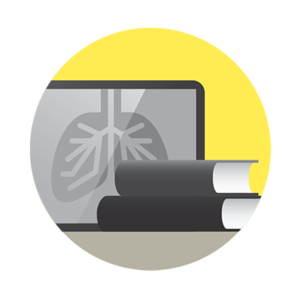3. Create compelling health-economic communications
A new focus on institutional buyers
The new medtech model calls for a reorientation of commercial activities – switching from a primarily clinician-focused approach to an institutional buyer orientation. These ‘payers’ – whether in the form of hospital administrators, governmental bodies or insurance companies – are vital stakeholders but have objectives that differ to those of clinicians and thus require a different approach.
Traditional communication targeted to clinicians will generally focus on the product, its features, and comparisons to competitors. Institutional buyers require more macro arguments on a product’s health-economic benefits and the impact on total cost of care.
3. Create compelling health-economic communications

A new focus on institutional buyers
The new medtech model calls for a reorientation of commercial activities – switching from a primarily clinician-focused approach to an institutional buyer orientation. These ‘payers’ – whether in the form of hospital administrators, governmental bodies or insurance companies – are vital stakeholders but have objectives that differ to those of clinicians and thus require a different approach.
Traditional communication targeted to clinicians will generally focus on the product, its features, and comparisons to com- petitors. Institutional buyers require more macro arguments on a product’s health-economic benefits and the impact on total cost of care.

Institutional vs. clinician communication
The need for engaging communications
That said, the principles of communication still apply. Just because you emphasize health-economic arguments, that doesn’t mean that it has to be a dry presentation of spreadsheet data. In fact, with the potential for contact often being lower than with
clinicians, there is a good argument to make the communication as powerful as possible when the opportunity arises.
Companies that are able to deliver the most convincing arguments will operate with huge commercial advantage and be best positioned to defend against low cost competitors. To make that happen, it’s necessary to ‘turn numbers into stories’ and involve the audience as much as possible.
As a rule of thumb, two-thirds of your communication should be storytelling. Begin by explaining your company’s overall experience and track record in the disease area. This helps people see the story beyond the numbers and the investment that you are bringing. Then talk about the disease, sophistication in treatments, incidence and survival rates – in human terms. Digital technology can work wonders here in bringing these stories to life though graphics, video and animations.

Institutional vs. clinician communication
____________________________________
The need for engaging communications
That said, the principles of communication still apply. Just because you emphasize health-economic arguments, that doesn’t mean that it has to be a dry presentation of spreadsheet data. In fact, with the potential for contact often being lower than with
clinicians, there is a good argument to make the communication as powerful as possible when the opportunity arises.
Companies that are able to deliver the most convincing arguments will operate with huge commercial advantage and be best positioned to defend against low cost competitors. To make that happen, it’s necessary to ‘turn numbers into stories’ and involve the audience as much as possible.
As a rule of thumb, two-thirds of your communication should be storytelling. Begin by explaining your company’s overall experience and track record in the disease area. This helps people see the story beyond the numbers and the investment that you are bringing. Then talk about the disease, sophistication in treatments, incidence and survival rates – in human terms. Digital technology can work wonders here in bringing these stories to life though graphics, video and animations.
Make it interactive
You can also use the same kind of digital communications technologies that the customer team might use with clinicians with an institutional buyer audience. The opportunities for interaction that these technologies offer can make your arguments more relevant to each institution.
A presentation, for example, could include embedded calculators that enables your audience to add information like the number of patients that they care for and then see how your product will improve diagnosis or clinical outcomes in their specific institution.
One difficulty of engaging with institutional buyers is the high degree of market fragmentation when compared to traditional clinician audiences: the purchasing processes and the audience can be very different at a country, regional and even individual healthcare institution level.

Flexible tools for payer communications
Make it interactive
You can also use the same kind of digital communications technologies that the customer team might use with clinicians with an institutional buyer audience. The opportunities for interaction that these technologies offer can make your arguments more relevant to each institution.
A presentation, for example, could include embedded calculators that enables your audience to add information like the number of patients that they care for and then see how your product will improve diagnosis or clinical outcomes in their specific institution.
One difficulty of engaging with institutional buyers is the high degree of market fragmentation when compared to traditional clinician audiences: the purchasing processes and the audience can be very different at a country, regional and even individual healthcare institution level.

Flexible tools for payer communications
_____________________________________
Flexible communication tools
In practical terms, this means that your engagement might be a relatively informal face-to-face meeting with one or two people or a much more formal presentation to a large panel. Likewise, you might be speaking to a purely administrative audience on some occasions and then to a mix of administrative and clinical audiences at other times. Your communication tools therefore need to be flexible.
A good solution is an e-detailing style presentation that can run on a mobile device for face-to-face sessions and also be projected on screen in more formal settings. With the right content, it’s even possible for the presenter to match the presentation to the audience on-the-fly. By dialling up or down on amount of clinical or health-economic content, you can flexibly respond to the different stakeholder needs.
About Agnitio
Agnitio helps life science companies generate effective relationships with payers, medical professionals, and their patients. Agnitio’s system is implemented in more than 90 countries and 25 languages – and used by major pharmaceutical and medical device companies including Bayer, Philips Healthcare and Roche.
Five immediate digital communication
opportunities for medtech
Explore how you can use digital technology to implement the new commercial model in your company. Click on the topics below to learn more:
Rainmaker multichannel for medtech
Discover how Rainmaker multichannel can improve your digital customer experience.






